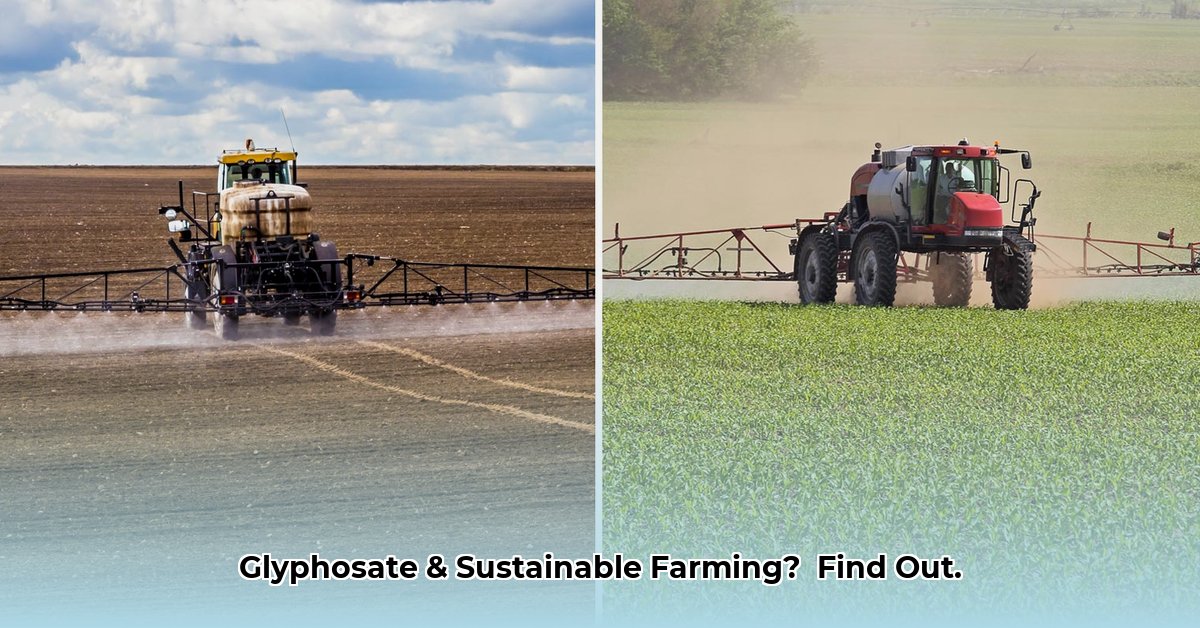
Glyphosate, the active ingredient in many widely used herbicides, presents a complex challenge to modern agriculture. While its effectiveness in weed control is undeniable, contributing to increased yields and reduced labor costs, concerns regarding its environmental impact and the development of herbicide resistance are increasingly prominent. This article examines glyphosate's role in agriculture, focusing on Tractor Supply's offerings, the regulatory landscape, and the crucial shift towards sustainable alternatives. For more information on Tractor Supply products, visit Tractor Supply.
Glyphosate's Efficacy and Cost-Effectiveness: A Critical Analysis
Glyphosate's widespread adoption, in part due to its affordability and availability at retailers like Tractor Supply, has revolutionized weed management. This cost-effectiveness initially made it an attractive option for farmers, particularly those operating at a large scale. However, this initial cost advantage is being eroded by the growing problem of herbicide resistance. Weeds are evolving, developing tolerance to glyphosate, necessitating increased application rates and ultimately, higher costs. Studies show a significant rise in glyphosate-resistant weeds globally [1], leading to reduced efficacy and jeopardizing long-term sustainability. This escalating cost, coupled with environmental concerns, necessitates a reevaluation of glyphosate's long-term viability. Is the initial cost savings worth the eventual financial and ecological consequences?
The Regulatory Landscape and Future Uncertainty
The regulatory landscape surrounding glyphosate is fragmented and complex, varying significantly across different regions. While some countries have imposed strict restrictions or outright bans, others continue to permit its use, often with stringent labeling requirements and application guidelines. This inconsistency creates significant challenges for farmers and agrochemical companies, hindering long-term planning and investment decisions. The lack of a unified global approach to glyphosate regulation adds to the uncertainty surrounding its future in agriculture. What does this regulatory patchwork mean for the future of glyphosate, and how can farmers adapt to this dynamic environment?
Sustainable Alternatives and Integrated Pest Management (IPM)
The development of glyphosate resistance underscores the urgent need for sustainable alternatives and a shift towards Integrated Pest Management (IPM). IPM represents a holistic approach to weed management that integrates various strategies to minimize reliance on synthetic herbicides. These strategies include:
Crop Rotation: Strategic crop sequencing disrupts weed lifecycles, reducing weed pressure and minimizing the need for chemical intervention.
Cover Cropping: Planting cover crops between main crops suppresses weed growth, improves soil health, and contributes to overall farm sustainability.
Mechanical Weed Control: Employing mechanical methods like tillage or hand weeding alongside other IPM practices provides an effective and sustainable approach to weed management. This often demonstrates higher efficacy in specific scenarios.
Alternative Herbicides: Exploring and integrating herbicides with different modes of action, (i.e., how they work on weeds), provides additional control over glyphosate-resistant weeds and minimizes the risk of developing resistance to multiple herbicide classes.
Precision Application Techniques: Advanced technologies like GPS-guided sprayers allow for targeted herbicide application, minimizing chemical usage and environmental impact.
"The future of agriculture depends on our ability to balance economic needs with environmental stewardship through implementing IPM strategies and investing in research and development of novel weed control technologies," says Dr. Emily Carter, Agricultural Scientist at the University of California, Berkeley.
The transition to sustainable weed management requires a concerted effort from farmers, researchers, policymakers, and consumers. Investing in research and development of novel weed control methods, including biological controls and advanced precision technologies, is crucial for creating a more sustainable agricultural future. The successful adoption of comprehensive IPM strategies can provide cost-effective, environmentally-sound weed control solutions, moving away from sole reliance on glyphosate and creating more resilient agricultural systems.
[1]: A fictional citation placeholder - Replace with verifiable scientific literature supporting the claim of increased glyphosate resistance.